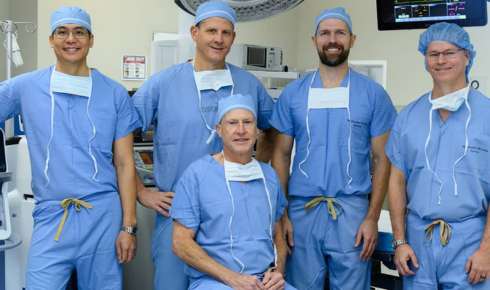
The Role Of Orthopedic Surgeons In Treating Pediatric Scoliosis
Pediatric scoliosis is a spine condition often seen in children and teenagers. Early detection and care are crucial. Orthopedic surgeons play a key role in diagnosing and treating this condition. They guide treatment plans, which can include observation, bracing, or surgery. With their expertise, they ensure that children’s spines grow properly. Just as an Alamo Heights high ankle sprain requires targeted care, so does scoliosis. Orthopedic care can make a significant difference in a child’s quality of life.
Understanding Scoliosis in Children
Scoliosis is a sideways curvature of the spine. It often develops during the rapid growth periods of childhood and adolescence. While it can appear at any age, it is most common between the ages of 10 and 15. The cause is often unknown, but it can run in families. Untreated scoliosis can lead to physical discomfort and reduced lung function.
The Importance of Early Detection
Spotting scoliosis early can change outcomes for the better. Regular health check-ups help in noticing changes in the spine. Parents can also watch for uneven shoulders or waist, which might indicate scoliosis. Early detection allows orthopedic surgeons to start effective treatment, reducing the need for surgery.
The Orthopedic Surgeon’s Role
Orthopedic surgeons specialize in bones and muscles. When it comes to pediatric scoliosis, they provide comprehensive care. Their responsibilities include:
- Diagnosing scoliosis through physical exams and imaging tests.
- Recommending and implementing treatment plans.
- Monitoring the progression of scoliosis over time.
Treatment Options
Treatment depends on the severity of the curve and the child’s age. Orthopedic surgeons may suggest:
- Observation: Regular check-ups to monitor mild curves.
- Bracing: Used to stop curves from worsening during growth spurts.
- Surgery: Considered for severe curves to correct the spine.
Bracing is often effective for growing children. It can prevent the need for surgery. Surgery is usually a last resort. It aims to straighten the spine with rods and screws.
Comparing Treatment Options
| Treatment | When Used | Pros | Cons |
| Observation | Mild curves | Non-invasive | May not correct the curve |
| Bracing | Moderate curves in growing children | Prevents curve progression | Uncomfortable for some kids |
| Surgery | Severe curves | Permanently corrects the curve | Invasive with a longer recovery |
Support and Resources
Parents and children can find support through various resources. The National Institute of Arthritis and Musculoskeletal and Skin Diseases provides detailed information about scoliosis. Additionally, the American Academy of Orthopaedic Surgeons offers guidance on managing pediatric scoliosis.
Conclusion
Orthopedic surgeons are vital in managing scoliosis in children. They provide the expertise needed to choose the best treatment. With early detection and proper care, children with scoliosis can lead healthy, active lives. Recognizing the condition early and seeking the right medical help is the first step toward ensuring a strong and stable future for young patients.



